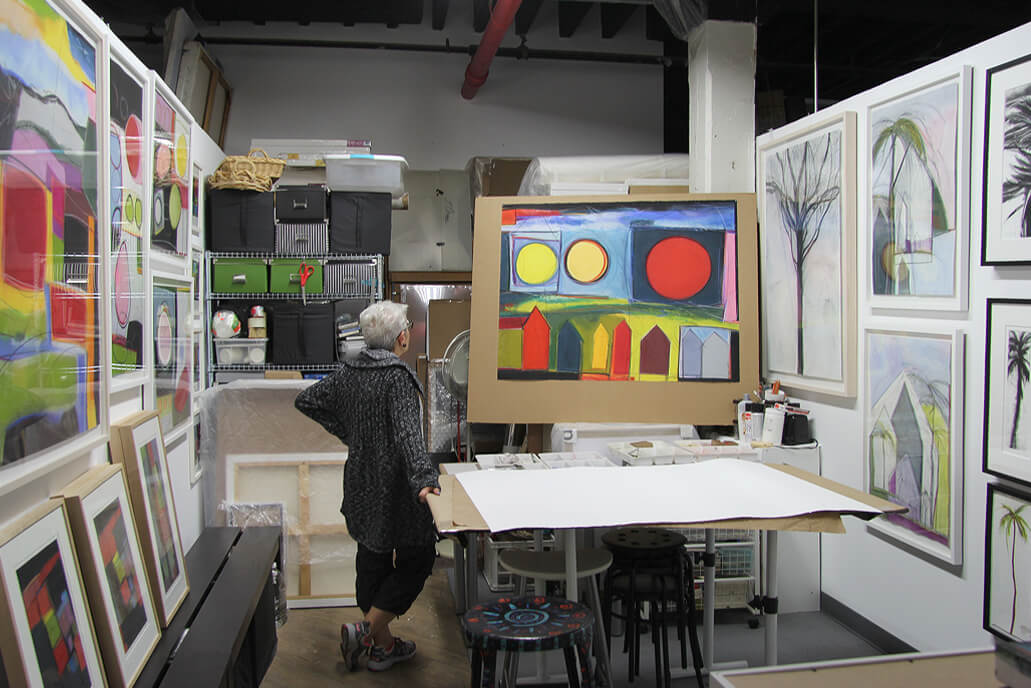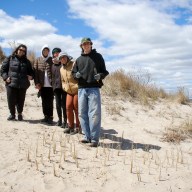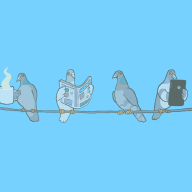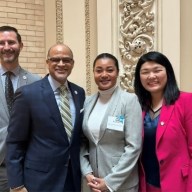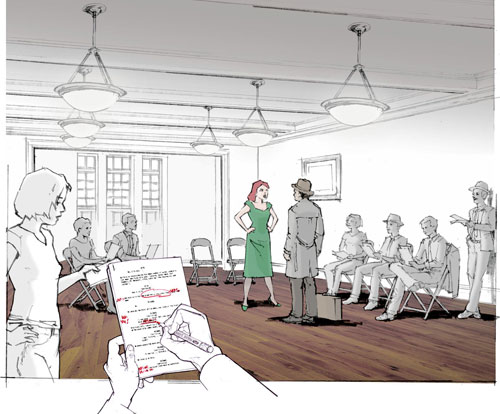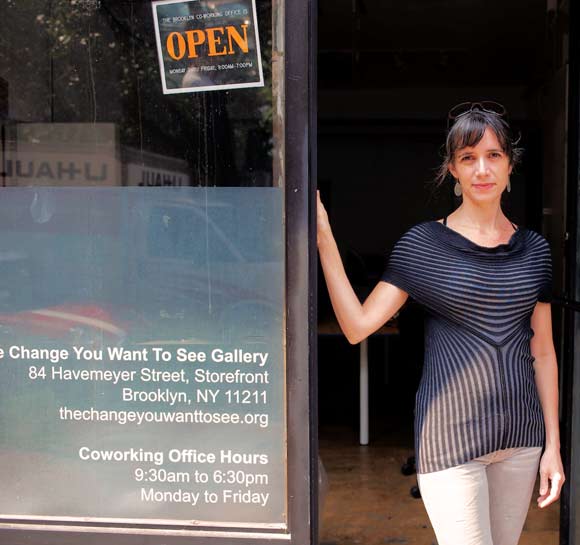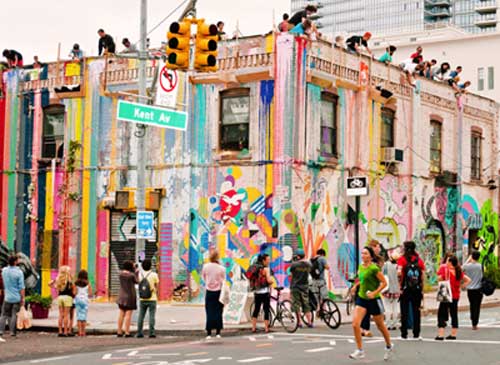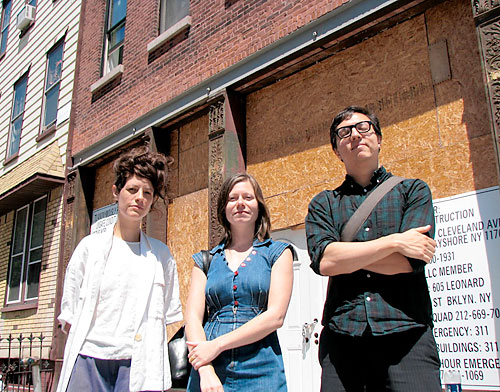Gowanus artists were among the thousands of New Yorkers spending their days dealing with the destruction of Hurricane Ida after the storm dumped historic amounts of rain on the city earlier this month.
Dozens of working artists work out of studios at Arts Gowanus and the Brooklyn Art Cluster, both housed in the basement at 540 President Street, blocks away from the Gowanus Canal. The building flooded badly on the night of the storm, taking on as much of eight inches of water that ruined finished artwork, works-in-progress and raw materials alike.
Jo-Ann Acey has rented a small studio at the Brooklyn Art Cluster for about six years. A lifelong painter, Acey woke up to an email the morning after the storm letting her know the building had flooded, and asking artists not to come in until it was safe to do so. When she finally made her way to Gowanus that afternoon, she was hopeful, she said. The streets had dried, and it seemed like the damage might not be so bad.
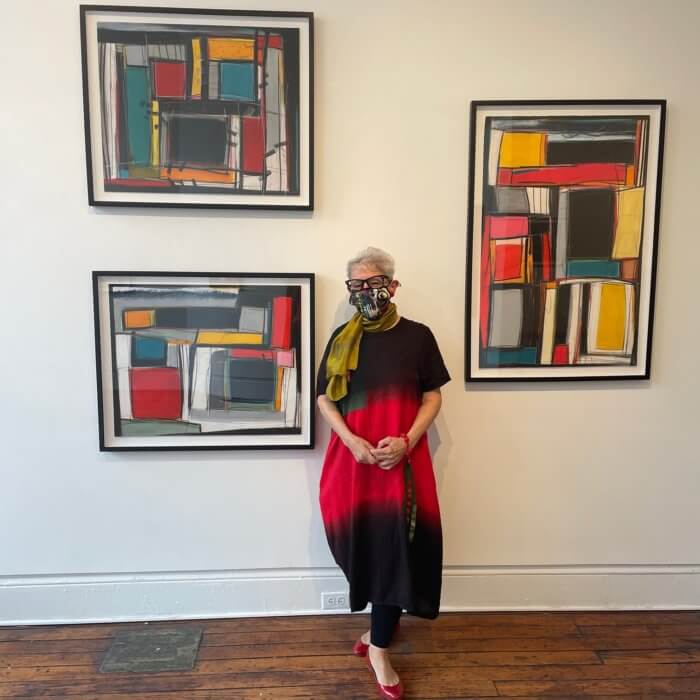
“As soon as I went into the hallway and I saw the puddles that were still there, I was like, ‘ugh,’” she said. “And then as I went down the hallway to my studio and I just followed the water, I was like, ‘Oh, this is going to be bad.’ Initially, I cried, I hate to admit. I sobbed.”
The entirety of her most recent solo exhibition, “Urban Stories: A Changing Landscape” was framed and stored in her studio. All eleven pieces were ruined, she said. So were around 70 other finished and framed works.
On the low end, she estimates that she lost $100,000 in finished artwork.
In time, she said, she said, she’ll probably sift through her damaged pieces and see what can be salvaged. She’s been able to pull some of her pieces mostly intact from their frames, and they’ll probably be able to be sold in the future.
But for now, the revenue she would generate from selling her artwork both online and in gallery shows is in jeopardy.
“The open studios are next month,” Acey said. “A lot of that work would have been hanging in my studio for people to purchase. You just never know when someone is going to reach out to you and say, ‘We need six pieces for this show, are you available?’”
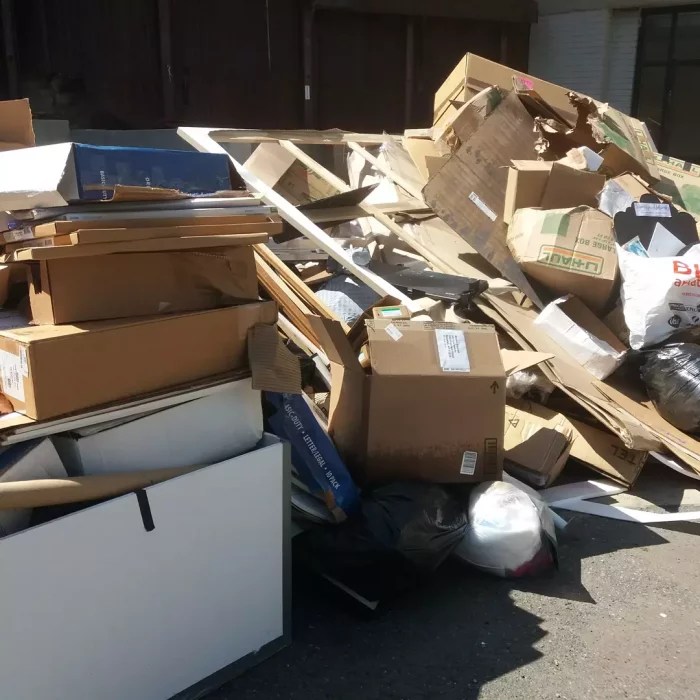
Lauren Bierly left her old studio just before the pandemic, she said, and spent some time working out of her kitchen while she kept an eye on rent prices for a new space. She wanted to go where there was an existing community of artists — so when she saw availability at Arts Gowanus, she jumped at the chance.
An interdisciplinary artist, Bierly has two primary focuses in her work. In one series, “Color Translations,” she takes advantage of her synesthesia, translating essays into layers of color. In another, she explores what she describes as “the sensory experience of space.”
Her studio took on an inch or two of water, she said, covering the floor in one half of the room, where most of her works-in-progress were being stored.
“I didn’t lose any final artwork, which was amazing,” she said. “I lost a ton of studio supplies. My studio looks really, really bare compared to how it used to look. So I kind of just took it as the universe telling me I needed to clean.”
Still, losing work in progress was difficult. As she cleaned and reorganized, she said, she realized the backboard for one of her largest pieces, part of “Color Translations,” had been destroyed after six years of work.
“I was about halfway through that project, and I was not in the right frame of mind that evening, or the day after when I was cleaning out the studio,” she said. “I got rid of the backboard without documenting anything. So that project is basically gone. That’s probably the biggest casualty of the entire thing, unfortunately.”
Like Acey, Bierly lost some of the works she was planning to finish and exhibit at the Gowanus Open Studios next month, and is trying to change gears. She estimates she lost around $10,000 in materials.
“I have a good arts admin day job, so I can support myself,” she said. “But I had been trying to shift into strictly just selling artwork, which was beginning to pick up. This also takes an emotional toll.”
Some of the work lost in Acey’s studio was decades old, she said, bits and pieces of old series she’s accumulated since she started painting in graduate school.
“It’s a lifetime of work, in a way,” she said.
In spite of their losses, Acey and Bierly were in agreement that the community of artists at 540 President had rallied, supporting themselves and each other. It’s that community, with a long history in Gowanus, that keeps them here.
“As long as the community that is trying to hold on exists within Gowanus, I have no intention of leaving,” Bierly said. “I bought materials, like shelving and stuff, to get everything off the ground, so if it does flood again, I’m not impacted the way I was this time.”
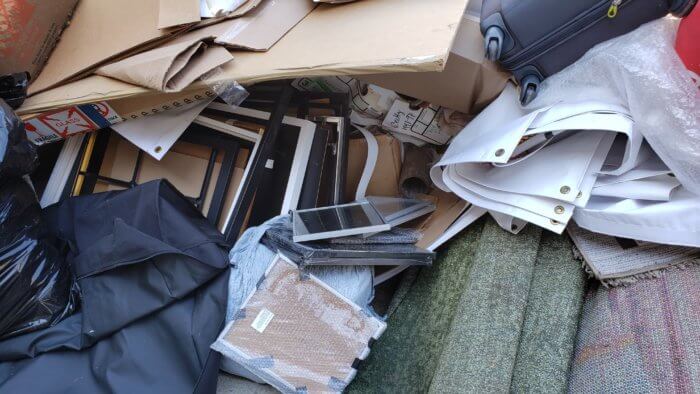
Keun Young Park, who owns the Brooklyn Art Cluster with her husband, JoonHyun Hwang, started a GoFundMe for Acey.
Artists themselves, Park and Hwang decided to start the Brooklyn Art Cluster when they realized a good, affordable studio space was hard to come by.
“We wanted to build an artistic community,” she said. “Artists prefer to work alone, but still we need the coworkers, the colleagues, to inspire each other.”
A handful of studios were damaged in the storm, she said, none more severely than Acey’s. Park and the building’s landlord have both filed insurance claims, she said.
“Most of the general insurance doesn’t cover the damages from natural disasters,” she said. “The landlord also has no responsibility for the individual’s belongings damaged from the natural disaster.”
Acey said most individual artists don’t take insurance out — it’s expensive and doesn’t cover much. Going forward, though, Park said she and her husband will be recommending everyone take out their own coverage.
“And we are searching for another space, a more safer space,” Park said. “We love the Gowanus area, but we have other difficulties.”
On top of the flood, Park was already worried about rising rents and concern about the impact of the impending rezoning on the arts community. They don’t want to move the Cluster far, Park said, but are exploring the options.
Gowanus artists are getting ready for two big fundraisers — ArtWorks on Sept. 17, and Gowanus Open Studios next month.
“Even if it’s not the intention to buy from artists, it’s the support of being present,” Bierly said. “Showing up for the artists in the sense that the community is here.”
“Just being present and seeing the work is just as important as the monetary,” she said. “But I would really plug the monetary.”


